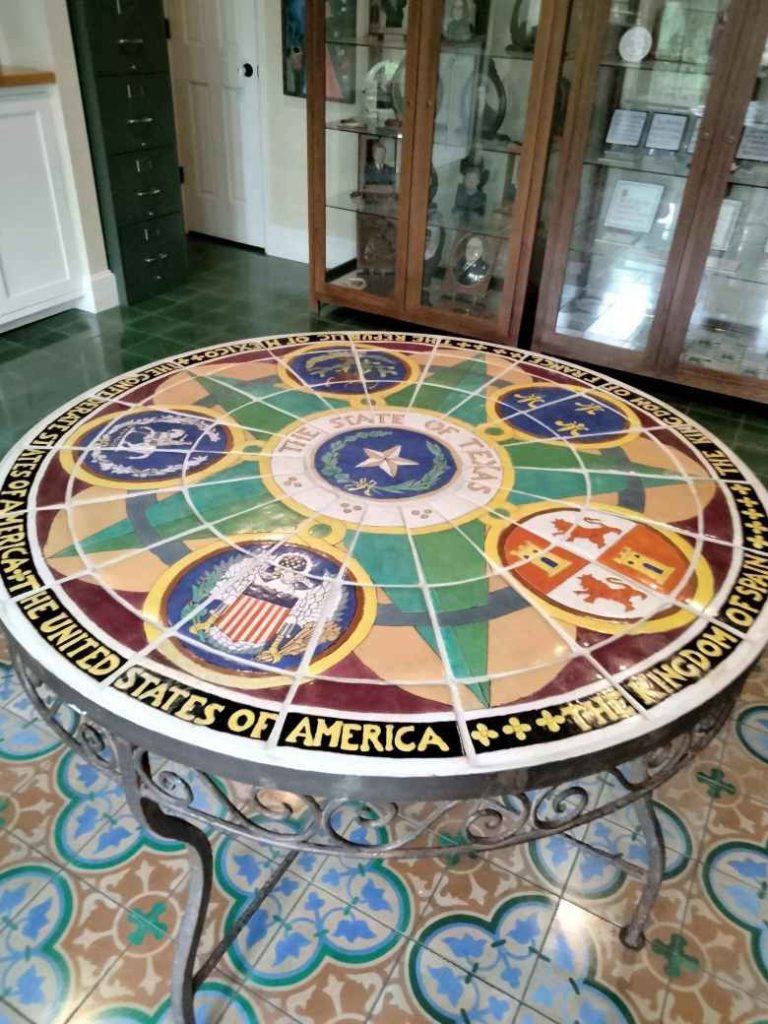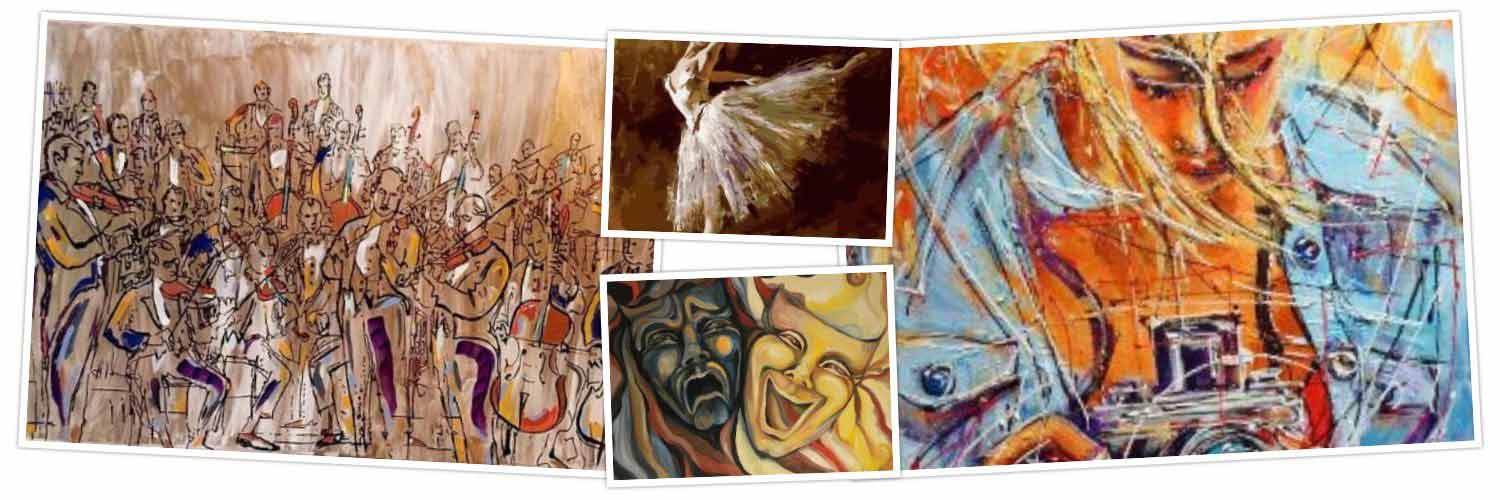A Passion for Art Tiles
By JASMINA WELLINGHOFF, Editor
The moment you step into Susan Toomey Frost’s house, you notice colorful tile pieces, from practical tables to two-dimensional sculptures and exquisite smaller artwork on the shelves. This lady loves tiles, and she’s been collecting them for a few decades.
“I think it’s been part of my life-long interest in old things,” she explains as she gives her visitor a tour of the home. “I went to Jefferson High School where there were so many tiles everywhere. When I look back to that time, I think that Spanish Colonial Design had an influence on me.”

Later in life, she went to an estate sale in San Antonio where she fell in love with and purchased a small tile piece featuring the Virgin of Guadalupe, which is still in her house. One thing led to another, so at an antique show, she found items featuring tile manufactured at the San Jose Potteries, a workshop that operated near Mission San Jose for many years. “So, I bought a few of those,” she said matter-of-factly. She also lived for six years in Mexico where the local craftsmen produced their own pictorial tiles.
Today, Frost is considered an authority on the subject, who recently wrote a book about San Antonio tile manufacturing enterprises owned and led by businesswoman Ethel Wilson Harris in the 1930s and 40s.
Titled “Colors on Clay: The San Jose Tile Workshops of San Antonio,” the hefty volume, documents the founding and history of three separate enterprises that Harris ran: Mexican Arts and Crafts (1931 – 1941); San Jose Potteries (1934-1945), and Mission Crafts that operated within the Mission San Jose compound from 1941 to 1977. Often, all three are lumped under the umbrella name of San Jose Potteries.

Although most contemporary tiles had abstract geometric design back then, San Antonio manufactured tiles featured pictorial representations of the region’s culture, plants and animals. Most of the images were originally painted by artist Fernando Ramos who depicted people dancing indigenous dances of Mexico; men serenading women, musicians, food vendors, fiesta scenes, and more. Because he was also a dancer, Frost says he liked to incorporate movement “and fluidity” into his designs. Those were subsequently transferred onto tiles by the artisans of the potteries.
Harris had both a residence and a workshop near Mission San Jose, where her home still stands today. The residence is used for offices and is open to visitors only by appointment. Her first enterprise, Mexican Arts & Crafts, opened on the San Antonio riverbank downtown, and a small shop in the mission’s granary sold the finished products to tourists and locals. The workshop’s ware gained a wider exposure at the 1933 Chicago World’s Fair, leading to expanded production at the San Jose Pottery, which was intended as a production facility for the smaller Mexican Arts & Craft. San Jose Pottery also made dinner ware and tiles known as “Pan American Ware.” These featured designs of Western, Indian and Mexican scenes.
At some point during her research about art tiles, Frost found herself involved in a sort of dispute with California experts who doubted that Texas ever had an art pottery. To increase the confusion, there was a business called San Jose Pottery in California, too. “I had to do a lot of research to prove that I knew what I was talking about,” she noted. Subsequently, she published an article in the Journal of the Tile Heritage Association, which helped establish her authority on the subject. She also exhibited at an L.A. tile show in the late 80s by sharing a table with a friend. “California dealers were impressed,” she said. During this period, she also received a call from PBS representatives who wanted to interview her about her research that confirmed that the San Jose Pottery was indeed in Texas and not in California.

The devoted tile-enthusiast was mostly able to purchase art tile works for reasonable prices, until the media exposure induced others to get into collecting, including actress Diane Keaton, who became a big collector. Prices jumped.
Right now, a number of pieces that she donated to the Witte Museum are on display there. Though a bit squeezed in a small gallery, the display includes a number of beautiful, colorful tile wall sconces based on Ramos’ paintings, and believed to have been in the lobby of the Teatro Nacional, a one-time popular performance house, which was demolished in the process of widening Santa Rosa St. downtown. There are other fine examples of Ramos’s paintings & drawings depicted on 8-inch tiles. He also drew a self-portrait of himself and his dancing partner, titled “Gypsy Tango” that was transferred onto four 6-inch tiles, set in original wrought iron flower-pot hangers. The exhibit also features larger items, including two tables.
Frost is pleased that members of the Center for the Advancement and study of Early Texas Art – known as CASETA – will see the tile exhibit at the Witte when they gather in San Antonio for their 2023 symposium & Texas Art Fair in June.
As for contemporary tile artists, Frost mentioned the names of Diana Kersey and Oscar Alvarado, here in San Antonio. She is a ceramicist; he is a sculptor whose large sculptures are covered with thousands of mosaic pieces of tile and glass.
As for where to see San Jose tiles, Frost suggests the Hugman Dam on the River Walk and two murals at the McNay Art Museum, on the second floor. And, of course at the Witte for the duration of the exhibit.
“I wanted to place my tiles where people can see them,” she said.
——————————————————————————————————————–
“San Jose Tiles: the Art & Artist” at the Witte will remain on view through Aug. 13. The exhibit is located in the Dawson Gallery, Witte Museum, 3801 Broadway, 78209, www.wittemuseum.org; free with museum admission.
